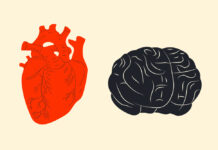A recent article published in Social Theory & Health explores non-suicidal self-injury, or self-harm, from the perspective of embodied social communication. The authors, Peter Steggals, Steph Lawler, and Ruth Graham, argue that self-harm has been understood primarily as a psychological condition inside a person. Through in-depth qualitative interviewing of individuals who self-injure, people in relationship with those who self-injure, and those with both experiences suggest that non-suicidal self-injury is instead a deeply embodied and communicative set of behaviors.
“In this article, we explore some of the communicative processes, spaces, and impacts associated with self-injury, utilizing a phenomenologically informed examination of parents’ experiences of living and interacting with children who self-injure. We argue that beneath the level of interpersonal communication, the social life of self-injury is rich with complex, subtle but often ambiguous communicative activity,” write the authors.
 As the number of ER visits related to self-harm continues to rise in different parts of the western world, self-harm and non-suicidal self-injury have become the focus of several clinical initiatives.
As the number of ER visits related to self-harm continues to rise in different parts of the western world, self-harm and non-suicidal self-injury have become the focus of several clinical initiatives.
Dialectical Behavior Therapy (DBT) has been shown to reduce both self-injury as well as suicide attempts. Interventions promoting mindful self-compassion show promise in addressing eating disorders. However, a 2016 meta-analysis does call into question the “low-quality evidence” of research into these interventions.
Some researchers believe that self-harm should be understood as a form of interpersonal communication for people who may find it difficult to express emotions by other means.
The current study picks up on this self-harm theme as a deeply embodied, interpersonal, and social phenomenon, rather than treating it exclusively as an “intrapsychic” and individualistic malady. Reconceptualizing self-harm to include its embodied and relational components may aid in understanding how best to promote healing initiatives.
The authors performed 26 in-depth phenomenological interviews in England with people who self-injure, people in social relationships with those who self-injure, and people with both experiences. Their analysis of the data was guided by “three levels of possible communication: the interpersonal, the intersubjective and the inter-corporeal.” 20 women and 6 men were interviewed, including 9 mothers and 3 fathers. Two of the parents had their own history of self-injury, while the rest did not.
The authors explain the “interpersonal” level of self-harm as a failure of normative communication. Many of the parents interviewed explained that even before knowing about the self-harm, their sons and daughters withdrew into their own worlds. This was sometimes understood as normal teenage behavior until the self-harm was discovered.
Interestingly, some of the parents struggled to communicate about the self-harm as well:
“As Rachel explains: ‘I couldn’t really say the words… I couldn’t use the word ‘self-harm,’ I couldn’t, or ‘hurt yourself,’ or ‘cut yourself’; I couldn’t use those words, they couldn’t come out of my mouth, they were too painful.’
This was accompanied, for several parents, by a general sense of uncertainty regarding how to address their children. They feared that they might trigger a painful response or make the situation worse.
As the authors note, these sensitivities and failures around language show a “partial collapse” in the whole family system, rather than exclusively within the person self-harming.
Additionally, even something as simple as a closed-door was understood by one parent to signal a significant form of communication. Though a closed door can be seen as a “refusal” to communicate, this refusal is itself communicative.
Turning to the “intersubjective,” the authors describe this level as persisting even when normative communication has stalled. They list phenomena such as body language and even physical spaces as important here.
In one interview, a mother described finding razors in her daughter’s bedroom. She let her daughter know that she had found them, but she did not remove them. The authors refer to the daughter’s room as an “alternative bulletin board,” where a kind of indirect communication could occur since the daughter continued to leave razors around even after her mother discovered them.
Additionally, the daughter told a mental health worker where her mother could find old suicide notes in the bedroom. This room served as an alternative place and form of communication—a “communicative zone”—picking up where traditional linguistic communication had failed.
According to the authors, intersubjective forms of communication such as the bedroom example are often ambiguous, rather than pointing necessarily to conscious intent.
The third level of communication, the “inter-corporeal,” is understood by the authors as a more fundamental form of embodied communication.
In one example, a mother explained that she discovered her daughter’s self-harming when she went sunbathing in the family’s garden in a “strappy top,” which made visible scars on her arms. The mother believed this to be a conscious choice on the part of her daughter, as though she was ready to share her experience, although the authors state that the ambiguity here is obvious.
The authors understood this kind of disclosure as “re-drawing the boundary” of the secret or marking off new social space. The daughter’s revealing of her body’s scars “brings the mother in” to the secret, which the mother chose not to reveal to her husband or her own mother for fear of shame and stigma.
This anxiety was now, in some sense, shared between the two of them because of the daughter’s choice (fully conscious or not) to reveal her scars.
The authors believe that these interviews highlight a different interpretation of non-suicidal self-injury, not as something merely private, but also “public” in the sense that the body and physical “lived spaces” can be highly communicative.
In closing, they lay out four elements of this reinterpretation of the body: as foundational, extended, relational, and communicative. They refer to the existential philosopher Maurice Merleau-Ponty on these issues, with his view of the meaningful, relational “lived” body as the ground level of consciousness.
The authors conclude:
“The disturbances and excitations of the communicative field of the family home that we have described here demonstrate that self-injury cannot be thought of as something that is either individual or social, secret or communicated, private or shared. We have found that the personal is not something wholly contained within the boundaries of the body but something that extends outward through other bodies, relationships, and spaces.
As such, while self-injury may be experienced as intensely personal, it is nonetheless best conceptualized as a richly communicative phenomenon: even if that communication is not an overt and fully deliberate interpersonal communication of the kind envisaged by the sender-receiver paradigm.”
****
Steggals, P., Graham, R., & Lawler, S. (2020). ‘I couldn’t say the words’: Communicative bodies and spaces in parents’ encounters with nonsuicidal self-injury. Social Theory and Health, 18(3), 270-286. (Link)















Nothing will be quite as non productive and mostly injurious
than staring at or approaching a human as if they are an oddity.
It results in fear.
Report comment
It seems like self harm would be associated with the acquisition of some human need, maybe by a part of the mind that the person isn’t aware of.
Report comment
I’ve read numerous accounts of people self harming “just to feel something.”
So it would make sense that it’s likely true that giving such people tranquilizers (antidepressants, antipsychotics, or other drugs that numb people) likely make matters worse.
But I do agree, most distress is caused by “social” factors. And I do know we need to help the “mental health” workers overcome their delusional belief that “all distress is caused by chemical imbalances in individuals’ brains.”
Thank you for helping to re-educate the “chemical imbalance” deluded “mental health” workers.
Report comment
Can you please elaborate about the idea of “qualitative interviewing of the individuals”, all at once to understand the social, or do the interviews take place over qualities of time, as a dimensional construct of awareness by the organization as opposed to the individuals? Trying to understand the nature of “social communication” in sound, print, telepathy? To tease out when the estrangement within the individual, begins to create some issues that have no words? (And may not have words, if ineffable?) And what if the sender-receiver are also receiving-sending with a small part being absorbed/modulating by the technologies?
Report comment
YouTube has taken down my self injury awareness video.
People self injure for a multitude of reasons.
Report comment
It took all this work and tortured language to find out that someone who harms themselves is trying to tell us something?
Report comment
Seriously! This is a new concept?
Report comment
What about the multitudes of people who hide their Self Inflicted Violence? They never show anyone so I guess this study is pretty fuckin worthless? There is no communication problem. It’s a way to cope. So is alcohol but you can still function when you cut and in a world where appearance is everything well we survive another day. The actual numbers are waaaaaay higher. They were 1 in 10 back in the late 80’s. Holy crap if I weren’t censored on MIA I could write you an article that reflects the Reality of this situation. Sorry but your only scraping the surface.
Report comment
What situation are you referring to?
Report comment